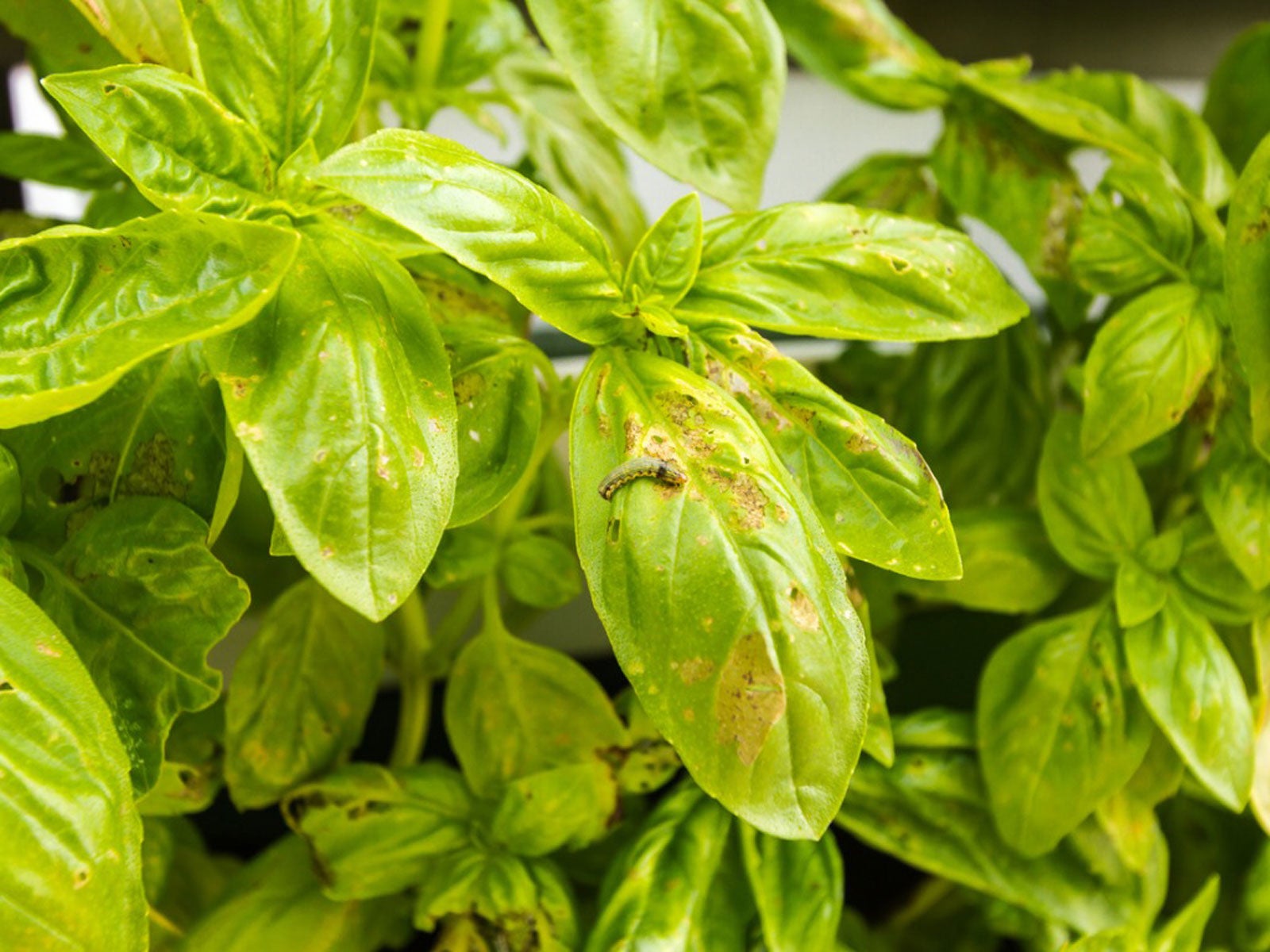Basil Plant Turning Yellow: How To Treat Yellow Leaves On Basil Plants


Versatile and easy to grow, basil is an attractive culinary herb valued for its aromatic leaves, which are used either dry or fresh. Although basil is usually grown as an annual, it is suitable for growing year-round in USDA plant hardiness zones 10 and above. Although the herb is relatively trouble-free, it is susceptible to certain pests and diseases that can cause yellowish leaves on basil plants.
What Causes Basil Leaves to Turn Yellow?
There are a number of reasons for a basil plant turning yellow, and determining the reason isn’t always easy. Improper watering – Root rot, a result of too much water, is one of the most common reasons for yellow leaves on basil plants. Water basil only when the top 1 to 2 inches (2.5-5 cm.) of soil is dry, and remember that slightly dry soil is healthier than soggy soil. As a general rule, one deep watering every seven to ten days is adequate. If you grow basil in a container, be sure the pot has at least one drainage hole. Fungal disease – Although several fungal diseases can cause yellow leaves on basil plants, downy mildew is one of the most common. Downy mildew is a fast-spreading fungus recognized by yellowish basil leaves and a fuzzy, gray or brown growth. If you catch the problem early, you may be able to stop the spread by clipping affected growth. However, badly affected plants should be removed and disposed of carefully. Growing conditions – Chilly temperatures are another reason for yellowish basil leaves. Basil prefers daytime temps above 70 degrees F. (21 C.). Nighttime temperatures should be above 50 degrees F. (10 C.) Lack of sun is yet another common cause of yellowish basil leaves. Basil prefers bright sunlight for six to eight hours per day. Basil grown indoors will likely need artificial light during the winter, ideally for 10 to 12 hours per day. Aphids – Aphids are tiny pests that suck the juice from tender foliage, thus causing yellow leaves on basil plants. Look for aphids on the undersides of leaves and on the joints of stems and leaves. Aphids are easy to control with insecticidal soap, but be careful not to apply the soap when the sun is directly on the leaves or on hot days, as the soap can scorch the plant. Caterpillars - Other pests that feed on basil include many types of caterpillars, all of which can lead to foliar damage like yellowing of the leaves. Large caterpillars can be picked off or you can apply Bt (Bacillus thuringiensis), a natural bacterium that targets these pests. Root knot nematodes – These small, soil-dwelling pests can cause yellowish basil leaves and small galls on the roots. The best recourse is to harvest the plant and use the healthy leaves. Next time plant resistant varieties in soil not affected by nematodes. Lack of nutrients – Basil is a hardy plant that does well in poor soil, but it still requires nutrients in order to thrive. Fertilize basil regularly to prevent yellowish basil leaves using an all-purpose balanced fertilizer.
Gardening tips, videos, info and more delivered right to your inbox!
Sign up for the Gardening Know How newsletter today and receive a free copy of our e-book "How to Grow Delicious Tomatoes".

A Credentialed Garden Writer, Mary H. Dyer was with Gardening Know How in the very beginning, publishing articles as early as 2007.
-
 Looking For Plants To Give You The Soft And Fuzzies? Try These 5 Fuzzy Leaf Plant Options
Looking For Plants To Give You The Soft And Fuzzies? Try These 5 Fuzzy Leaf Plant OptionsLovers of texture, drama, silver foliage and tactile plants will adore these special sensory garden additions. These fuzzy leaf plant options will leave you all aglow
By Susan Albert
-
 Get Ready For A Summer Of Hummers! Grow These Full Sun Hummingbird Plants and Flowers
Get Ready For A Summer Of Hummers! Grow These Full Sun Hummingbird Plants and FlowersIf you’re lucky enough to enjoy a sunny backyard, make sure you are maxing out on your pollinator opportunities and grow these full sun hummingbird plants and flowers
By Tonya Barnett